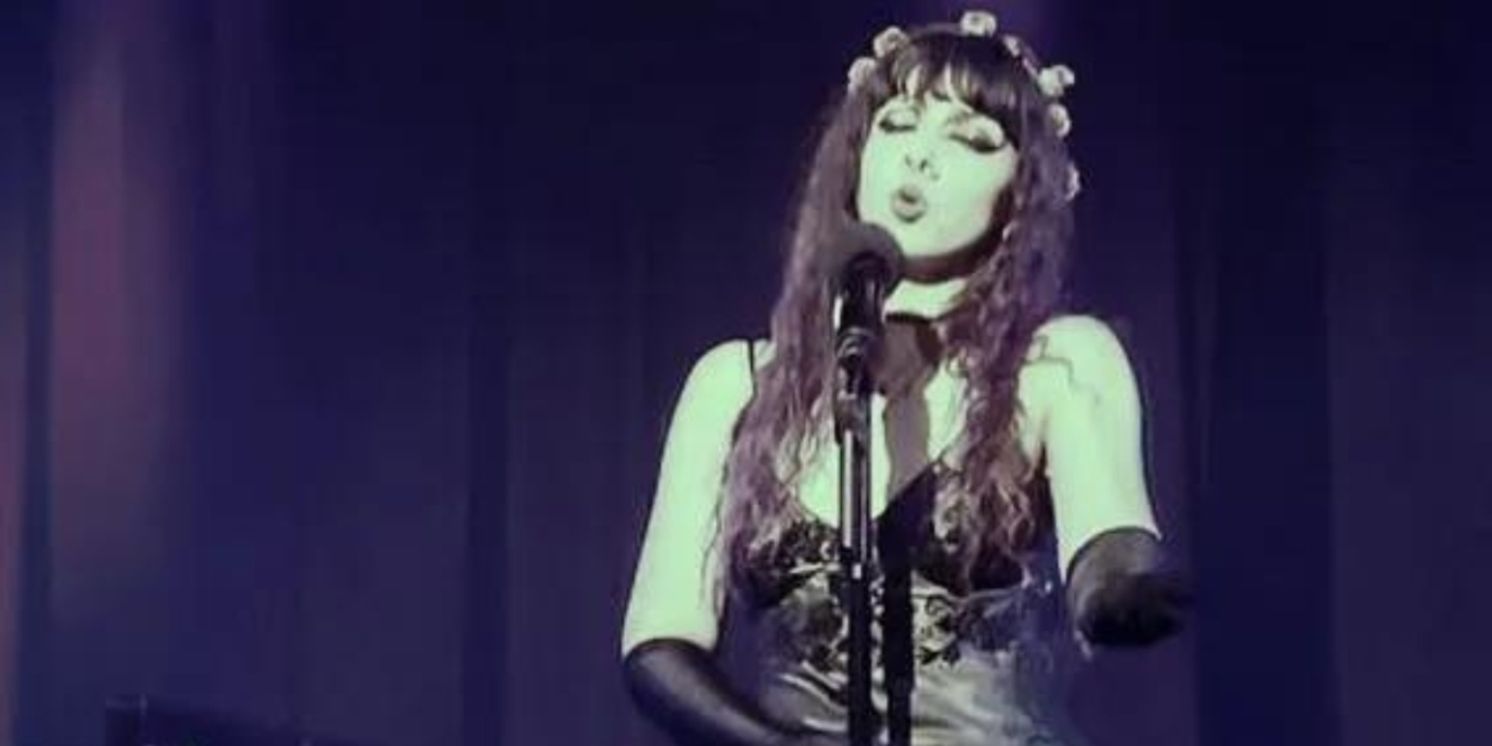Review: Artemisia LeFay's WASTED GIRL at Don't Tell Mama Is Intoxicatingly Gothic
LeFay's second show, named after her upcoming album, was a hit

Self-described “cabaret resurrectionist” Artemisia LeFay is well acquainted with the macabre. She performed her show, entitled Wasted Girl (named after her upcoming album) at Don’t Tell Mama on September 22, 2024. It consists entirely of original songs, and skillfully delivers on an ambitious concept through LeFay’s incredible writing and unwavering performance. Her ear for melody and ability to craft a compelling tune are present from the show’s opening, a somber instrumental piece aptly titled Ballad of the Unmarked Grave, played by Khullip Jeung on violin and Renee Guerrero on piano. The decision to use a piano and a violin was inspired - the instrumentation evokes a gothic opera, keeping things intimate and dramatic.
Artemisia herself waits to take the stage until the second song - the album’s title track, which introduces the concept of the Wasted Girl: someone whose talents, ambition, and beauty have led her to success and vice in equal measure, making her the subject of much attention (including of the lurid and sensationalized variety one finds in tabloids). LeFay does not condemn the Wasted Girls of the world, instead directing her sharp songwriting into an exploration, inviting the audience into the world she conjures. More than once, LeFay cites Anita Berber, a German artist from the Weimar period who was frequently the subject of local tabloids, as a major inspiration. Her relationship to fellow troubled and provocative artist (and, it could be argued, fellow Wasted Girl, to use the term gender-neutrally) Sebastian Droste is said to be of particular interest - the pair fueled each other’s avante-garde creativity (famously collaborating on a book of poetry) as well as each other’s self-destructive impulses, and both died of the same illness (tuberculosis) quite young. The fixation on Anita Berber reveals Wasted Girl to be a morbid double entendre, referring to a state of inebriation as well as unrealized potential from a life cut short, or one spent in other pursuits.
LeFay excavates that era’s underground arts scene while showcasing her skill in both writing and performance. She is mesmerizing on stage, utilizing her mezzo-soprano voice by infusing her delivery with a carefully channeled intensity, calibrated to fit the necessary character for any given song. LeFay states she was guided by a simple idea: death is eternal, but so is love. The intermingling of the two serves as the narrative link between the show’s tales of doomed romance, obsessive desire, and wistful longing.
This ethos takes a literal form in "Coffin Built for Two," a particularly crowd-pleasing number. It’s an upbeat tune about being buried with another person, and manages to twist its macabre subject matter into something fun and infectious - the kind of song you might find yourself inadvertently humming on the train back home.
Another tune, from a musical LeFay wrote entitled Ghosts of Weimar Past, deals with reminiscing about a lost lover who has passed on, as the character hopes that this ghost would still love them if they were to meet again. Hannah Mount joins the stage for a few numbers, most memorably towards the end of the show, for a jazzy song about a woman’s gradual journey into the world of big-city nightlife, with all its opportunities and temptations - a familiar story, but one that LeFay refreshingly reframes as an active and conscious choice by the song’s subject, rather than a tragic fall from grace. The Wasted Girl, so often painted as a passive, pitiable figure, asserts her autonomy.
Other sources of inspiration are present as well - "Beatrix the Queen of Bones," a particular highlight, is inspired by La Santa Muerte, a folk saint in Mexico, as well as personal loss. The song sees the singer portray death itself, swaying as if in a trace as she delivers a haunting yet surprisingly warm performance, one that speaks to those of us who may be so unlucky as to be well-acquainted with tragedy. Beatrix isn’t exactly, comforting, but she’s familiar.
The show’s closing number (minus the encore, of course) ponders a world in which live venues are abandoned and forgotten, until someone stumbles across one, at which point becoming possessed by the ghosts of entertainers past. The song, almost operatic in nature, functions as a self-referential nod to the show’s treatment of the late Anita Berber. LeFay sings of the spirits performing “till we disappear at light of day” - given the show’s subject matter and inspirations, a celebration of artistic zeal in the face of impending doom is a fittingly bittersweet note to end on.
Artemisia LeFay’s Wasted Girl is an intoxicatingly gothic ride through some of the darker manifestations of passion, from obsession to melancholy. The ideas are well thought out and consistently executed to a high level. It is at times funny, tragic, dramatic, and romantic, but it is always clever, and treats its subjects with more empathy than most would. Just as love and death are eternal, so too is the Wasted Girl.
Find more upcoming shows on Don't Tell Mama's website.
Learn more about Artemisia LeFay on her Instagram @artemisialefay.
Reader Reviews

Videos

